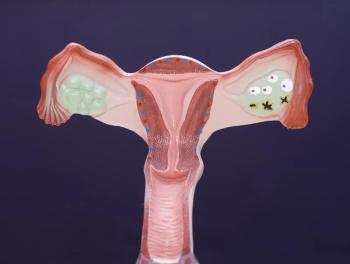
- ONCOLOGY Vol 13 No 7
- Volume 13
- Issue 7
Women Who Smoke Menthol Cigarettes Have Greater Nicotine Exposure
New research shows that women who smoke menthol cigarettes may be more likely to inhale deeper and potentially inhale more nicotine than do smokers of nonmenthol cigarettes. The study also showed that menthol cigarette smokers tend to have
New research shows that women who smoke menthol cigarettes may be more likely to inhale deeper and potentially inhale more nicotine than do smokers of nonmenthol cigarettes. The study also showed that menthol cigarette smokers tend to have their first cigarette of the day sooner than nonmenthol cigarette smokers. (The sooner a person smokes his or her first cigarette of the day, the more nicotine-dependent the person is thought to be.)
These results should caution smokers who believe that menthol cigarettes are in some way healthier or less irritating than nonmenthol brands. There is no safe cigarette, said study author Karen Ahijevych, phd, a researcher with Ohio States Comprehensive Cancer Center and an associate professor of nursing at Ohio State University.
Study Results Particularly Important for African-American Women
These results are particularly important for African-American women because the majority of African-Americans who smoke choose menthol cigarettes, she said. Black women also have a higher rate of smoking-related morbidity and mortality than do white women.
Studies have shown that 65% or more of African-American smokers use mentholated cigarettes, compared to about 25% to 30% of white smokers.
The study, published in a recent issue of Addictive Behaviors, involved 95 women smokers (average age, 35 years), 48 of whom were black and 47 were white. Of these, 27 black women and 22 white women smoked mentholated cigarettes. The women had smoked an average of 17 cigarettes per day for 15 years.
Dr. Ahijevych measured nicotine and carbon monoxide levels before and after each of the women smoked a single cigarette. Other measures included the volume of smoke inhaled (puff volume) and each womans blood level of cotinine. Cotinine is a breakdown product of nicotine that is frequently used as a marker for nicotine exposure. Dr. Ahijevych also recorded each womans smoking history, including the number of cigarettes smoked per day and how soon after waking each woman smoked her first cigarette of the day.
Study Results
The results showed that smokers of menthol cigarettes had a significantly larger puff volume than did smokers of nonmentholated cigarettes (45.8 vs 37.8 mL).
Menthol has been shown in animal studies to stimulate cold receptors in the throat. Stimulating those receptors would produce a cooling sensation, so smokers might find the smoke less irritating as they inhale. That might lead them to inhale more deeply, said Dr. Ahijevych.
Larger puff volumes could lead to a greater tobacco-smoke and nicotine exposure, she said. The studys finding that menthol smokers had significantly higher cotinine levels than did the smokers of nonmenthol brands (239 vs 189 ng/mL) supports that supposition.
In addition, the study found that while black women in both groups smoked fewer cigarettes per day than did white women (15 vs 19), they had higher blood levels of cotinine (249 vs 182 ng/mL). Other studies have also shown higher cotinine levels in black smokers compared to white smokers, although the reason for this difference remains unknown.
Menthol and Nicotine Dependence: Is There a Link?
Smokers of menthol cigarettes also had a significantly shorter time to first cigarette after waking (19 vs 37 minutes) than did nonmenthol smokers. Thats useful to know because we believe that the shorter that time period is, the more nicotine-dependent the smoker is likely to be, said Dr. Ahijevych.
It also suggests that a link may exist between menthol and nicotine dependence, and that clinicians should not use number of cigarettes smoked per day as their only estimate of a patients nicotine dependence, she said.
Asking smokers how soon after getting out of bed they have their first cigarette of the day also has important implications for treatment.
This research was funded by a grant from the American Lung Association.
Articles in this issue
over 26 years ago
Discussing Disease Progression and End-of-Life Decisionsover 26 years ago
New Genetic Mechanism Associated With Thyroid-Related Diseasesover 26 years ago
Beyond 5-Fluorouracilover 26 years ago
Nonsurgical Therapy Holds Promise for Basal Cell Carcinomaover 26 years ago
Photodynamic Therapy Effective for Swallowing Problemsover 26 years ago
Novel Gene Therapy to Clear Blood Clots in Leg ArteriesNewsletter
Stay up to date on recent advances in the multidisciplinary approach to cancer.


















































































